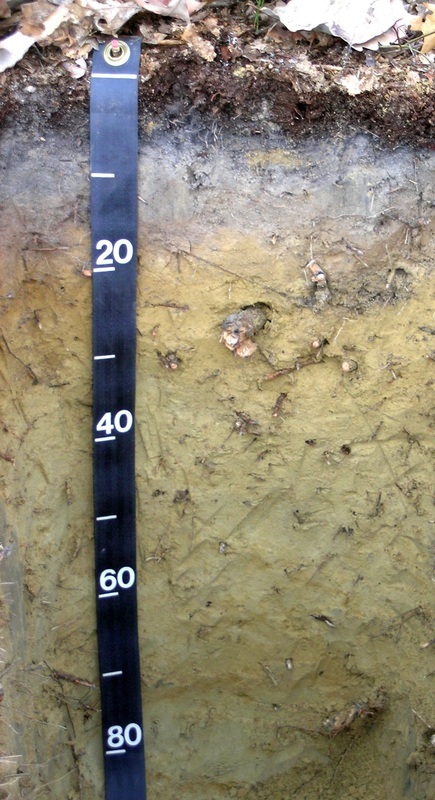Soils Study Guide
This page is designed to assist students in preparing for the New Jersey Envirothon. We hope the materials on this site will assist students in their preparation. Please continue to use the training trunks and other materials available through the Soil Conservation Districts.
Please note, the USDA NRCS website has recently been redone and many of the links on our website have broken. We are in the process of rebuilding the Soils Study Guide pages. Some links will direct you to the Internet Archive's copy of the old page.
|
"Out of the long list of nature's gifts to man, none is perhaps so utterly essential to human life as soil." |
Introduction
The soil forming factors supply the initial material and conditions under which a particular soil will form. The soil forming processes result from the interactions of the soil forming factors. These processes influence and even create a soil's physical and chemical properties.
The soil forming factors supply the initial material and conditions under which a particular soil will form. The soil forming processes result from the interactions of the soil forming factors. These processes influence and even create a soil's physical and chemical properties.
1. Functions of Soils
Soils are important because they perform many important functions, including:
Soils are important because they perform many important functions, including:
- Sustaining biological activity, diversity, and productivity
- Regulating and partitioning water and solute flow
- Filtering, buffering, degrading, immobilizing and detoxifying organic & inorganic materials
- Storing and cycling nutrients and other elements
- Providing support of socioeconomic structures
|
2. Variability of Soils
Soils vary from place to place due to differences in their Soil forming factors, Soil forming processes, and/or Soil properties: A. Soil Forming Factors (see "From the Surface Down", section 2)
B. Soil Forming Processes (see "From the Surface Down", section 3)
C. Soil Properties -X- Soil physical properties
Soil chemical properties
|
Reference: NRCS Soil Quality Institute website |
Photograph Credit
Fig. 1 Schoenagel III, Fred C. NRCS, Resource Soil Scientist & Robinson, Timothy J. BSCD, Natural Resource Specialist “Downer Soil Profile” 2013. Photograph. Tabernacle, New Jersey.
Fig. 1 Schoenagel III, Fred C. NRCS, Resource Soil Scientist & Robinson, Timothy J. BSCD, Natural Resource Specialist “Downer Soil Profile” 2013. Photograph. Tabernacle, New Jersey.
3. The Soil Environment
“Phases” of Soil
In their natural setting, soils exist as a “three-phase” system comprised of a:
An ideal soil contains:
“Phases” of Soil
In their natural setting, soils exist as a “three-phase” system comprised of a:
- “solid phase” - the soil matrix; includes inorganic material with various chemical and mineralogical properties, and organic material in varying degrees of decomposition
- “liquid phase” - the soil solution; includes soil water and its dissolved substances
- “gaseous phase” - the soil air; more variable in composition than the air above the soil
An ideal soil contains:
- 50% solid matter, of which 45% is mineral soil material and 5% is organic soil material
- 50% pore space, of which 25% is soil water and 25% is soil air
4. Special Topics on Soils -X-
- Water Movement in Soils
- Effects of Saturation by Water on Soils
- Fragipans


